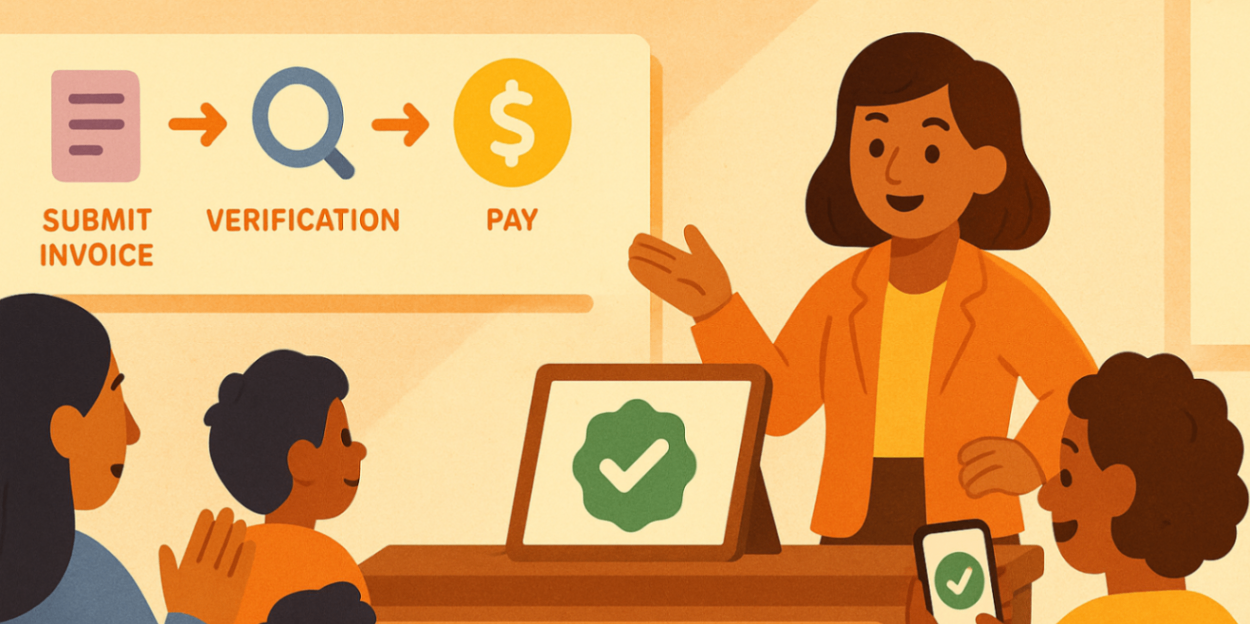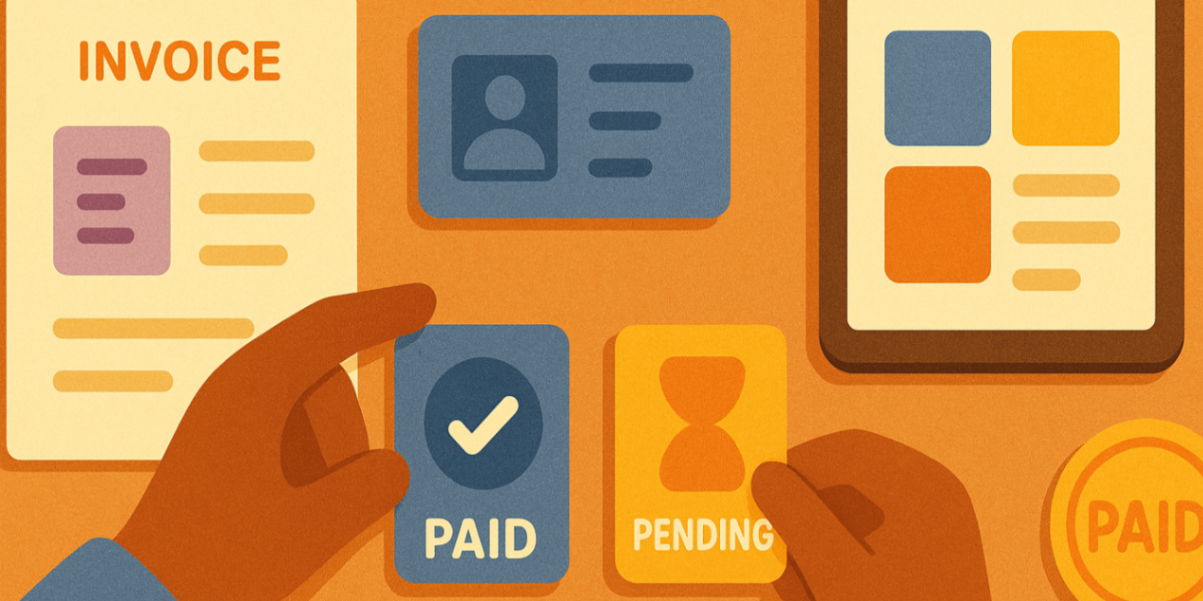
simplifying plan management invoices ndis for parents
4 September, 2025
Navigating the NDIS for your child can feel overwhelming, especially when it comes to managing funds and paying for services. That's where NDIS plan management comes in. For many parents across Australia, it offers a simpler way to handle the financial side of an NDIS plan. This guide is here to explain how invoices and payments work, breaking down the process into easy-to-understand steps. Understanding these new ways of managing your plan will give you confidence and control over your child's supports.
Key Highlights
Here’s a quick look at what you need to know about NDIS invoices and payments:
-
Plan management simplifies your life by handling financial tasks and paying providers on your behalf.
-
Correctly detailed invoices are crucial for quick processing and avoiding payment delays.
-
Providers submit claims through the myplace provider portal, while the NDIS provider portal is used for enquiries and viewing participant plans.
-
Most payments to providers are processed within 2-3 business days once a valid claim is submitted.
-
NDIS plan management offers flexibility, removing the need for traditional service bookings.
-
You can track your NDIS funding and spending through your plan manager’s dashboard or app.
Quick answer — the invoice & payment flow in one line

In essence, the process is straightforward: your service provider sends an invoice to your plan manager, who then claims the funds from your NDIS funding and pays the provider. This system is designed to take the administrative burden off your shoulders, allowing you to focus on the supports your child needs. Your plan manager acts as the financial intermediary, ensuring all invoices are handled correctly and all payments are made on time.
This flow ensures providers are paid promptly, typically within a few business days, as long as the invoice is accurate and there are sufficient funds in your plan. You, as the parent, simply need to approve the services. Your plan manager takes care of the rest, from verifying the invoice details to processing the payment through the NDIS payment system. It’s a streamlined approach that brings peace of mind.
How Invoices Work in NDIS Plan Management
An invoice is the first and most important step in getting a provider paid. Think of it as a formal request for payment that your NDIS provider sends to your plan management team. This document details the services delivered to your child and triggers the process of claiming money from your NDIS funding.
Without a proper invoice, your plan manager cannot make a payment. That’s why it’s so important for invoices to be clear, accurate, and complete. Let’s explore what information needs to be on every invoice and the common errors you’ll want to avoid.
Key Information Every Invoice Should Include
For invoices to be processed without a hitch, they must contain specific information. While the NDIS doesn't enforce a single template, providers should ensure every invoice, often sent as a PDF, is detailed and professional. This helps your plan manager quickly verify the claim and process it through the NDIS provider portal.
A complete invoice helps avoid the back-and-forth that can delay payments. The essential details are not complex, but missing even one can cause problems.
Your provider should always include the following:
-
The provider's ABN (Australian Business Number).
-
A unique invoice number and the date of issue.
-
The NDIS participant's full name and NDIS number.
-
A clear description of the support provided, including dates and hours.
Common Mistakes to Avoid When Submitting Invoices
Simple mistakes on invoices are the most common reason for payment delays. When a plan manager receives an incorrect invoice, they can't submit it to the myplace provider portal for payment, which means providers wait longer to get paid and your NDIS funding statements can become confusing.
These errors are usually easy to fix but are best avoided from the start. Taking a moment to double-check the details can save everyone time and frustration, ensuring payments are processed within a few business days.
Here are some common mistakes to watch out for:
-
Missing or incorrect participant name or NDIS number.
-
An absent or invalid ABN.
-
Claiming for supports not covered in the participant's plan.
-
Incorrect dates of service or calculation errors.
Submitting Invoices: Step-by-Step Process for Providers and Parents

The process for submitting invoices is designed for convenience. Typically, your provider will send their invoice directly to your plan management team, often via email as a PDF file. This is the most efficient way to get the ball rolling on payments.
As a parent, you can also be involved. If a provider gives you an invoice directly, you can simply forward it to your plan manager. Once received, the plan manager verifies the details and submits the claim through the NDIS provider portal. Next, we'll look at the different submission methods and how you can track an invoice's progress.
Using Electronic vs. Paper Submission Methods
In today's digital world, electronic submission is the standard. Sending invoices via email is the fastest and most reliable method, ensuring your plan manager receives them instantly. This also creates an easy-to-track digital paper trail for both you and your provider.
The NDIS is increasingly moving toward digital systems, including the new computer system and the NDIS provider portal, to streamline processes. Electronic submissions fit perfectly into this modern framework, reducing the risk of lost documents and speeding up payment cycles.
While paper submissions might still be an option in some cases, they are slower and more prone to errors or delays. For efficiency and clarity, electronic methods are highly recommended:
-
Emailing a PDF invoice.
-
Using a provider's dedicated online portal.
-
Ensuring digital copies are stored for your records.
Tracking and Managing Invoice Status
Once an invoice is submitted, how do you know what’s happening with it? Most plan managers offer an online portal or app where you can see the status of all your invoices in real-time. This transparency helps you stay on top of your budget and ensures your NDIS provider is paid within the expected business days.
If an invoice is delayed or rejected, your plan manager will investigate. They will identify the problem, such as incorrect details or insufficient funds, and contact the provider or you to get it sorted out. This proactive approach ensures issues are resolved quickly.
Here’s a simple guide to common invoice statuses:
|
Invoice Status |
What It Means |
|---|---|
|
Received |
Your plan manager has the invoice but hasn't processed it yet. |
|
Processing |
The invoice has been checked and submitted to the NDIS for payment. |
|
Paid |
The NDIS has processed the claim, and payment is on its way. |
|
Rejected |
There's an issue with the invoice that needs to be fixed. |
Payments: What Parents Need to Know
As a parent, your main concern is ensuring your child’s providers are paid correctly and on time. With NDIS plan management, the complexities of making payments are handled for you. Your plan manager draws from your child's NDIS funding and pays providers directly.
This means you don't have to worry about bank transfers or payment deadlines. Most valid claims are paid within a few business days. Understanding the payment process, including what causes delays, can provide extra peace of mind.
Payment Timelines and Delays Explained
Typically, payments are processed quite quickly. For providers who are recorded as a 'my provider' in the NDIS system, funds are generally paid within 2 to 3 business days after a valid claim is submitted. For other providers, it may take up to 10 days as the NDIS may perform additional checks.
However, delays can happen. These are often caused by simple errors on the invoice, issues with the new computer system, or if there isn't enough NDIS funding in the relevant support category.
Common reasons for payment delays include:
-
Incorrect invoice details.
-
The claim being for a support not covered in the plan.
-
Public holidays, which can affect banking timelines.
-
Temporary system-wide issues with the NDIS portals.
What Happens If an Invoice Is Rejected or Returned?
A rejected invoice isn’t a cause for panic. It simply means something needs to be corrected before it can be paid. When invoices are rejected by the NDIS, your NDIS plan management team is notified and gets to work finding out why.
The plan manager will contact the NDIS provider to request a corrected invoice or discuss the issue. This collaborative approach ensures that problems are fixed at the source, allowing for a quick resubmission and payment.
An invoice might be rejected for several reasons:
-
The participant's NDIS number is incorrect.
-
There are no funds left in that particular support budget.
-
The support item claimed is not aligned with the participant's plan.
-
The claim is for a date outside the plan's active period.
Keeping Records and Staying Compliant

Good record-keeping is essential when managing NDIS funding. While your plan management provider handles the heavy lifting, keeping your own copies of invoices and communications helps you stay organised and ensures compliance with NDIS rules.
This practice empowers you to track spending, verify services, and have all the necessary information ready for plan reviews. It gives you a clear picture of how your child's funds are being used, promoting transparency and control.
Record-Keeping Requirements and Tools for Parents
For parents, record-keeping doesn't have to be complicated. Your primary responsibility is to ensure the services on the invoices were delivered as described. Your NDIS plan management provider is required to keep detailed financial records, but having your own system is a smart move.
A simple digital folder on your computer or in your email account is a great way to store copies of all invoices and important correspondence. This makes it easy to find documents when you need them.
Here are a few simple tools and tips for effective record-keeping:
-
Create a dedicated email folder for all NDIS-related matters.
-
Save digital copies of every invoice you receive or approve.
-
Use your plan manager’s online portal to review statements.
-
Keep a simple spreadsheet to track key supports and expenses.
Conclusion
Understanding how invoices and payments work in NDIS plan management is a crucial step for parents who want confidence and clarity in the process. By staying organised, keeping accurate records, and maintaining open communication with service providers, you can reduce delays and avoid common mistakes that often cause unnecessary stress.
At daar, our NDIS-registered specialists have the knowledge and experience to guide families through every stage of plan management. With the right support, managing the financial side of your child’s care becomes less daunting and far more empowering.
Ready to simplify your NDIS plan management? Book your consultation today and let our experts help you navigate invoices, payments, and compliance with ease.
Frequently Asked Questions
Can plan managers help review invoices before payment?
Yes, absolutely. A key role of plan management is to review invoices from an NDIS provider to ensure they are accurate and meet NDIS guidelines before processing payments. This helps prevent errors and protects your plan funds, making NDIS plan management a valuable service.
Are there official invoice templates for NDIS services?
The NDIS in Australia does not provide a mandatory, official template for invoices. However, providers can find guidelines on the NDIS provider portal. Most plan managers and providers use a standard PDF format that includes all the necessary information for successful NDIS plan management.
How do parents know when payments have been made?
Most plan management providers offer an online portal or mobile app. Here, you can track your NDIS funding, view submitted invoices, and see the status of payments. You can typically see when a payment has been processed, usually within a few business days of approval.
.svg)












